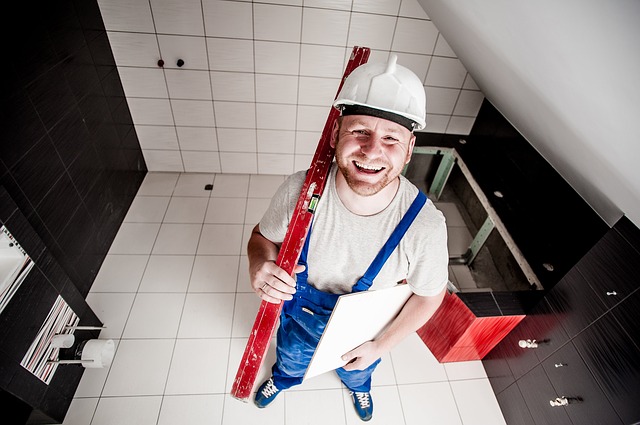When listing the most dangerous occupations, tiling doesn’t typically make the top ten. However, that doesn’t mean that tiling work isn’t without its hazards. Things still go wrong on a tiling project, and mistakes can result in injury—or worse. So, what are the workplace hazards that tiling professionals and their employers should be aware of?
The most frequent causes of injury when tiling includes lifting heavy loads, exposure to prolonged vibrations, holding awkward positions, chemical exposure, and dangers presented by cracked or chipped tiles.
Reducing hazards in the workplace isn’t only about improving safety. There are financial benefits to running an efficient and secure tiling operation—such as reduced insurance costs. And if you’re just starting in the business, knowing how much your insurance will cost can be an important number. Especially since premiums typically go up when claims do. Understanding the following five hazards should help minimize the risk. We will also further identify ways to mitigate issues before they become headaches later.
Lifting Heavy Loads
An individual tile is no great load to bear. Stack a few dozen of them together, however, and the burden quickly becomes heavier. It isn’t uncommon for tiles to be bundled together in excess of 50 pounds. This is why many common injuries in the tiling industry are related to the hauling of products to and around the worksite.
Properly using dolly systems and practicing team-lifting are good ways to stop lifting injuries from occurring in the first place.
Strong Vibrations
Tile vibrating is a standard part of the tiling process designed to remove air bubbles when making final placements. Vibrating is typically done by machine and, when done correctly, poses little threat. The biggest issue when vibrating is prolonged exposure.
The stronger the vibration setting, the more limited exposure should be to it. This is most easily accomplished by breaking vibration work into disparate sections. For example, do one half of a bathroom floor and take a short break—maybe prep the next area at this time—before moving on to the next section.
Holding Awkward Positions
Take a look around your bathroom next time you’re in there, and notice all the irregular spaces that one typically has. You might not normally spend much time considering how the tile between the wall and the toilet got there, but whoever installed it gave it some thought. Haunching or contorting into tight places is nothing new for experienced tiling professionals. And while it can be a pain, a certain amount of awkward positioning comes with the job.
Still, try to keep from holding positions for a prolonged time. Even if a position is comfortable initially, eventually, muscles will fatigue, and this is when the risk of injury is most acute.
Chemical Hazards
Not every hazard will be as physically apparent. For example, the dangers posed by solvents from cleaners and the like can quickly overwhelm a room but are otherwise invisible. The most dangerous times for chemical exposure are when preparing a site, applying adhesives, and when using any corrosive agents such as thinners.
To prevent the worst exposure ills, always work in a well-ventilated area. When using caustic materials, always use adequate eye protection and wear rubber gloves. In addition, a personal respirator should be used when applying any chemical mixtures to avoid exposure to vapors.
Cracked or Chipped Tiles
The final hazard we will touch on is the threat posed by cracked or chipped tiles. Not only does chipped tile produce edges that can be razor-sharp, but flying porcelain can be dangerous—especially to the eyes. The hazard is especially acute when cutting tiles.
To keep the threat of cracking or chipping tiles, treat them with care. It doesn’t take significant amounts of weight or pressure to break a tile before it has been strengthened by being installed.
There are many ways to cut tiles that will reduce the risk. The most accessible method is to score the tiles on the coarse, non-enameled side. First, mark a straight line using a pencil and a straight edge. Second, cut across the line with a razor. Be sure to use one continuous motion. Making several cuts will result in a jagged line. Most tile cutters will also have a scoring component built-in. Once the tile is scored, all breaks should be clean.
The other option is to employ a wet saw. Cutting tile will require a tougher blade than other materials. Use a diamond-tipped saw blade for best results. You may think that you can get away with using an inferior product, but this is inefficient and dangerous. In all honesty, a wet saw is likely overkill unless there is an entire section of a project that will require cutting out.
Be Safe, Be Smart When Tiling
The best way to avoid injury or accident when tiling is to employ standard PPE such as gloves and goggles. It is also best to always take time when doing a labor-intensive task such as tiling. It is over extended periods that repeated motions become most dangerous.
So, when it comes to safety, take a tortoise and the hare approach to your project. Attention to detail helps improve safety, and by paying attention, you’ll also ensure you’re doing an excellent job for all stakeholders. So be wise and prioritize safety on your next tiling job.



